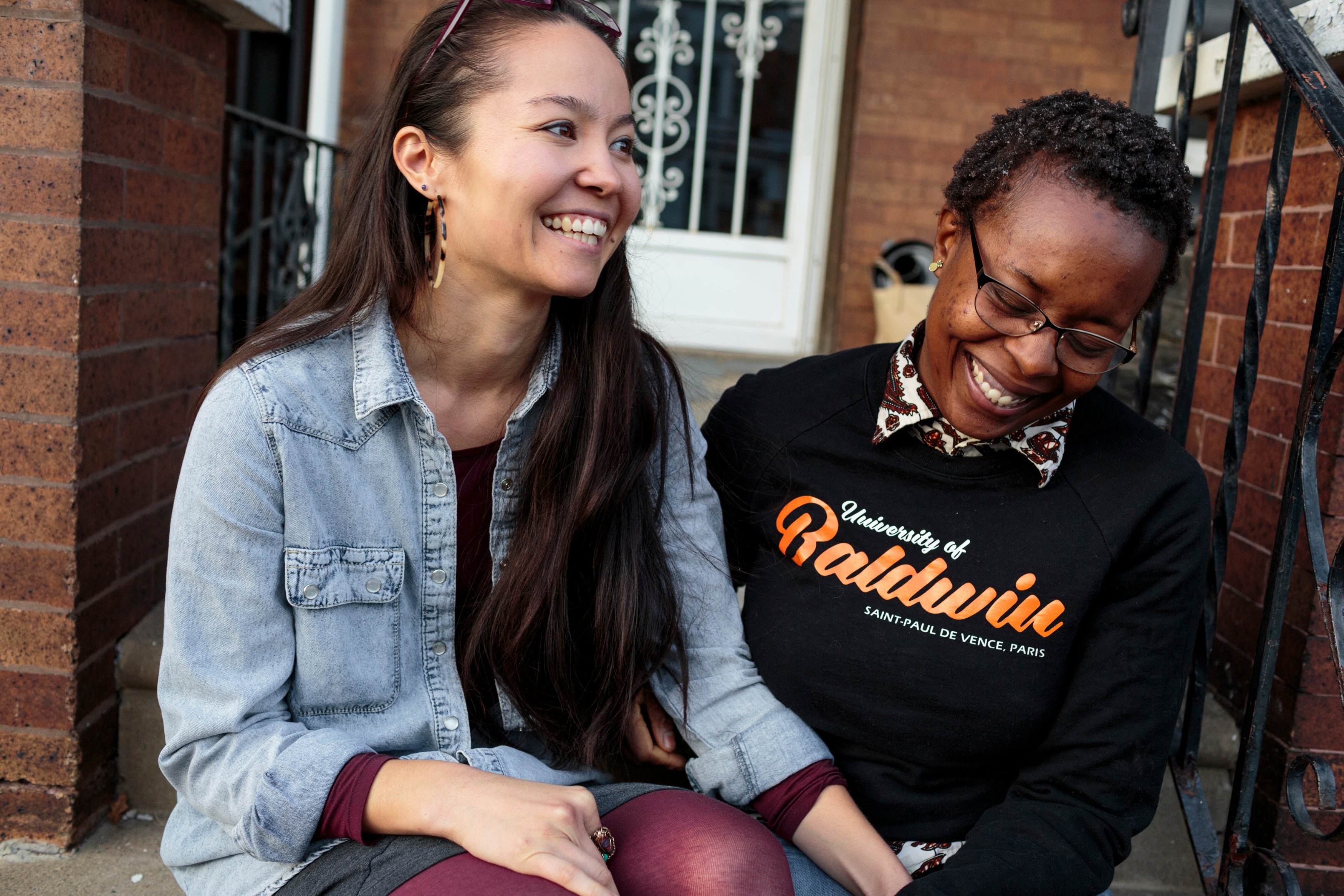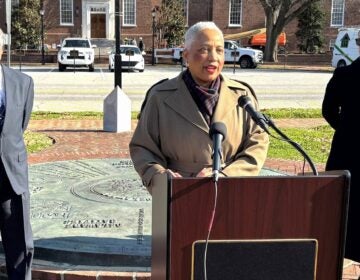Unequal lending keeps redlining alive in Philadelphia’s gentrifying neighborhoods

Rachelle Faroul is a 33-year-old woman with a good credit score and a degree from Northwestern University. When she decided to buy home in West Philadelphia, near Malcolm X Park, Faroul, then earning $60,000 a year teaching at Rutgers University, didn’t think to have her partner co-sign the loan. It didn’t seem necessary — until it was.
“I had a fair amount of savings and still had so much trouble just left and right,” Faroul said.
Despite her strong credit score, the young professional found herself rejected twice by lenders when trying to purchase a home in the gentrifying neighborhood. Faroul is black. One of the lenders who turned her down, Philadelphia Mortgage Advisors, made 90 percent of its loans to white applicants in 2015 and 2016. The independent broker told Faroul her income was not steady enough.
So she got a new job, at the University of Pennsylvania. But a year later, when Faroul tried for a loan with Santander Bank, new obstacles arose. An unpaid $284 electric bill appeared on her credit report, tanking her score. Santander said it couldn’t move forward. The bank denied 13 percent of white applicants in 2015 and 2016, compared to 37.1 percent of black applicants.
Things changed for Faroul when her partner, Hanako Franz, who is half-white and half-Japanese, agreed to co-sign her loan application. With Franz’s signature on the dotted line, Santander sang an entirely different tune. Faroul’s loan officer had “completely stopped answering Rachelle’s phone calls, just ignored all of them,” said Franz. “And then I called, and he answered almost immediately. And is so friendly.”
At the time, Franz was working part-time at a grocery store, earning a biweekly income around $144.65. The couple was approved for the loan in just a few weeks. But the experience still stings Faroul.
“It was humiliating,” she said. “I was made to feel like nothing that I was contributing was of value, like I didn’t matter.”
As the Philadelphia housing market booms, white homebuyers and homebuyers of color are not equally able to reap its rewards. White Philadelphians received 10 times as many conventional mortgage loans as black Philadelphians in 2015 and 2016, though they make up similar shares of the population, according to a yearlong analysis of millions of Home Mortgage Disclosure Act records by public radio program “Reveal” from The Center for Investigative Reporting.
Even controlling for applicants’ income, loan amount, neighborhood, and other factors, blacks were 2.7 times more likely than whites to be denied a conventional mortgage in Philadelphia.
“Everybody will tell you that they’re playing from the same playbook in terms of what is required to become pre-approved for a mortgage. You have to have your pay stubs, your bank statements, your tax returns; you have to have a particular credit score,” said Arlene Wayns-Thomas, president of the Philadelphia chapter of the National Association of Real Estate Brokers (NAREB), which represents African-American real estate professionals. “But minorities will be questioned and asked to provide information, documents, that may not be required of other races.”
For example, borrowers must prove they have the funds for closing costs, which could be done with a simple bank statement. Often, for a borrower of color, “Well now they want a letter from the bank, and they want the letter signed by the bank manager or the bank president, verifying that they, in fact, know this person has the funds in their account,” said Wayns-Thomas. “It could be clear and they still want this information. So it’s insult to injury.”
Wayns-Thomas mostly works with people of color. “But whenever we are working with whites, they don’t have the same challenges,” she said. “They seem to go through a lot smoother.”
Reached by “Reveal,” Faroul’s lenders denied that discrimination played a role, but analysis of the 31 million records publicly available under the Home Mortgage Disclosure Act show a clear pattern. Though lenders and trade groups do not dispute the disparity between white borrowers and borrowers of color, they say it can be traced to factors unrelated to race: a borrower’s debt-to-income ratio, and their credit score.
But the industry has fought to keep this information secret, especially the proprietary algorithms used to determine credit scores. This black box makes it difficult for researchers to prove discrimination. Given the long history of economic disenfranchisement of non-white Americans, Wayns-Thomas said relying on credit scores particularly disadvantages people of color.
“Doesn’t it seem something unfair that someone can describe who you are by their standards, and you can’t do anything about that but try to fight with them and dispute them, but their word is taken over your word?” asks Wayns-Thomas.
When they are offered loans, borrowers of color are frequently pushed into more expensive FHA-backed loans, or targeted by predatory lenders, said Soneyet Muhammed, director of community engagement at Clarifi, a Philadelphia nonprofit that teaches financial literacy. Americans of color are already starting the housing search with less wealth. The median net worth is now $9,000 for a black family and $12,000 for a Latino family, compared to $132,000 for a white family, according to the latest figures from the Census Bureau. But borrowers of color may also be suffering from gaps in knowledge and access.
Clarifi has run a financial education boot camp for the past five years, usually drawing between 20 and 30 participants for the six-month duration. Last year, when Clarifi launched a boot camp focused on the racial wealth gap, it attracted over 80 participants.
“I think we really tapped a nerve in terms of underserved African-Americans and Latinx people,” said Muhammed. The boot camp teaches prospective borrowers how to shop around for the best mortgage deals, recognize scams, and advocate for themselves with lenders.
“Americans shop for jeans, but we don’t shop for financial products as much as we need to,” said Muhammed. “This is particularly important for communities of color, because for them, the path to mortgages is riddled with land mines. They may on their surface qualify for affordable mortgages but are routinely denied products their white counterparts might receive.”
Philadelphia is not the only city with these disparities, but it is one of the worst. According to the “Reveal” investigation, African-Americans were denied conventional mortgages at much higher rates than whites in 61 metro areas in the U.S., including Atlanta, Detroit, St. Louis, and San Antonio. Black applicants fared far worse than whites in 48 cities, particularly in the South. Latinos were turned away at higher rates in 25 cities, Asians in nine, and Native Americans in three. Reveal found that all four groups were much more likely to be rejected for a loan in Washington, D.C., the nation’s capital.
If it sounds a lot like redlining, a federally backed, mid-century practice that made it nearly impossible for borrowers of color to get affordable mortgage loans, it is — with a twist: The 1977 Community Reinvestment Act, intended to combat redlining, required that banks invest in underserved, low-income neighborhoods. But because the CRA is tied to geography, not income or race, “Reveal” found that in gentrifying neighborhoods, most of these special loans are now going to new white homebuyers, not to longtime residents of color. This, plus the wealth and knowledge gaps, may explain why in some Philadelphia census tracts, whites account for just six percent of the population, but are applying for twice as many loans as blacks.
The disparities also mean that existing homeowners of color may struggle to acquire loans to maintain and fix up their properties, making them vulnerable to foreclosure, and feeding into a cycle of blight and loss in communities of color. “Homeownership is the foundation on which most people build wealth in this country,” said Muhammed. “If I have equity in my home, I can send my kid to higher education. I have the ability to pull equity out of my home for retirement. The problem is that path is obstructed for communities of color on a regular basis.”
It’s a frustration for her, and for Wayns-Thomas, who said the disparities also impact real estate brokers who work with homebuyers of color. “We have to jump through those hurdles along with the purchaser,” she said. In many ways, not much has changed since her organization was founded in 1937, when black realtors were excluded from the national trade organization, or since 1968, when the Fair Housing Act was passed. “We’re still fighting the same battles,” Wayns-Thomas said.
WHYY is your source for fact-based, in-depth journalism and information. As a nonprofit organization, we rely on financial support from readers like you. Please give today.






